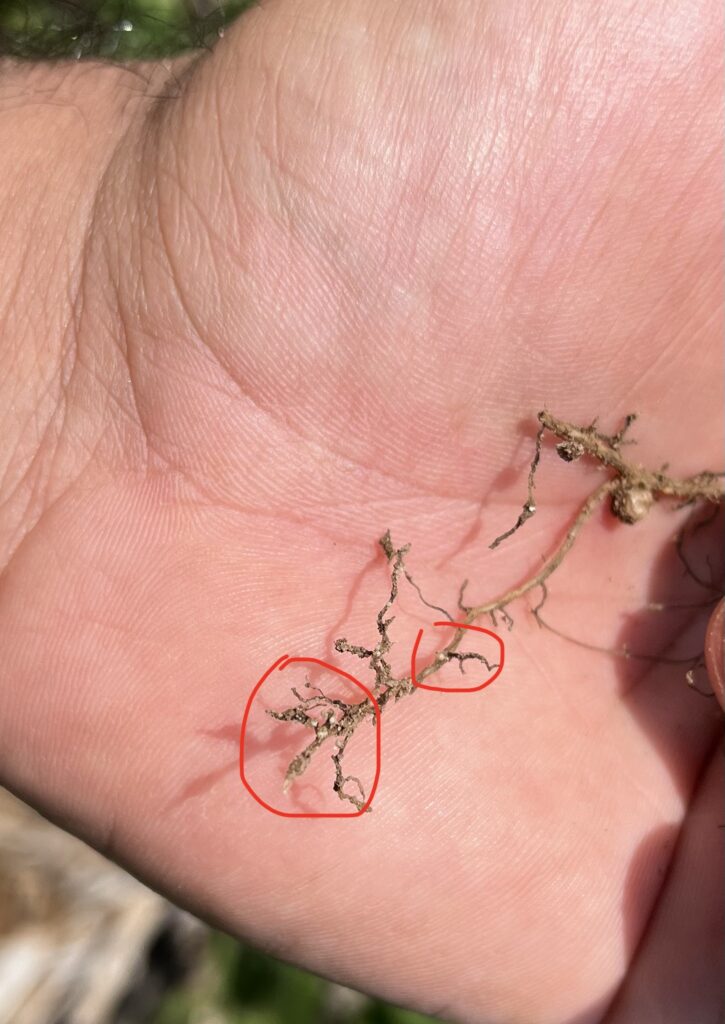Archive
If you find yourself wondering what happened when, look no further than the Crop Report Archive. We’ve compiled past reports, listing the most recent first. You can search by Region, Month, or Reporter to find information.


Despite the drier conditions, the soybean crop is progressing and reaching reproductive stages in this area of the state. In my last report, I visited a field with known root-knot nematode pressure, so this week, I decided to check a location with a history of elevated SCN populations. That field had numerous fully developed SCN females (cysts) and foliar symptoms. We may see more SCN foliar this season compared to other years due to the widespread drought.
I will leave some SCN scouting recommendations below. Please visit The SCN Coalition (TheSCNCoalition.com) for detailed SCN sampling recommendations and management insights.
– Visit areas with a history of SCN pressure.
– Look for potential field symptoms (patches with yellow plants and reduced growth – Figure 1).
– Dig (don’t pull) some plants using a shovel (see video 3). Pulling plants may leave some of the females in the soil, especially with the drier-than-normal conditions.
– Inspect the roots and look for adult females. They are small but can be observed with the naked eye (Figure 2).
– Females will look from white/light yellow to brown, depending on their developmental stage and age.
Clear skies with temperatures reaching mid 90s
No significant precipitation in the last weeks
Wheat harvest is wrapping up and DC beans are being planted in this area
R1-R3
V8-VT


 and then
and then